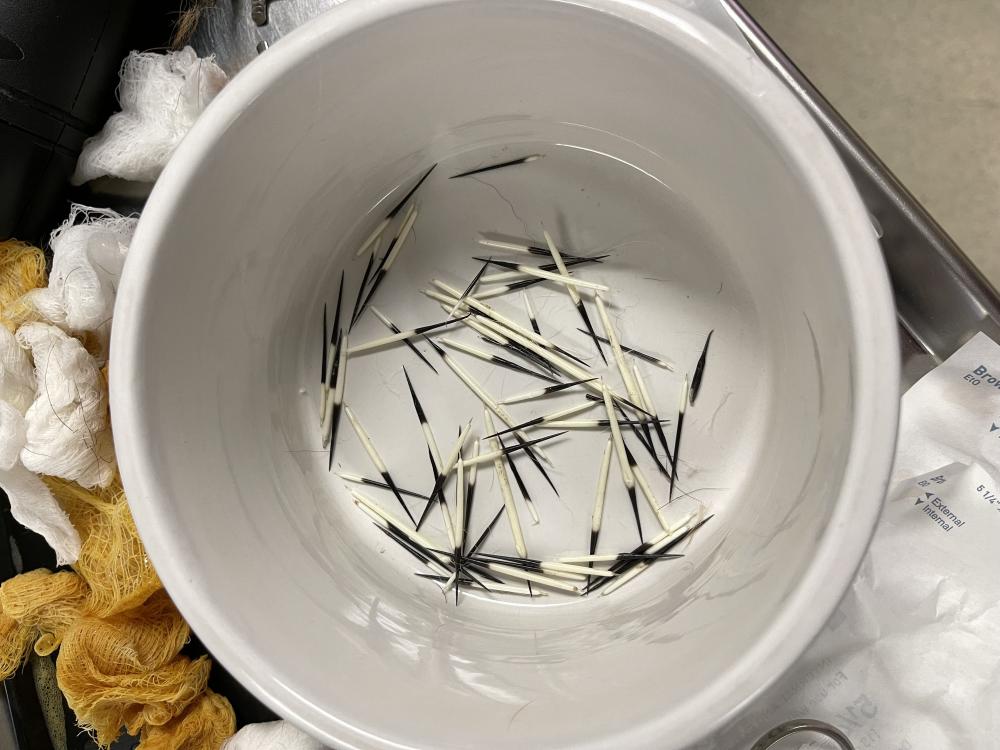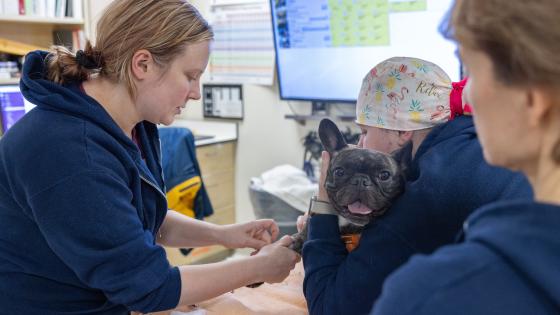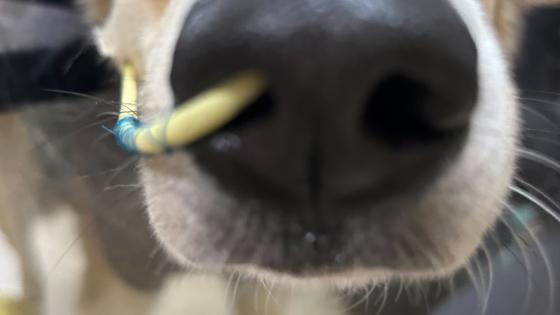Protecting Your Pet from Springtime Wildlife Encounters
Spring is the perfect time to enjoy the outdoors with your pets, but it also means more opportunities for wildlife encounters. Whether your dog is exploring your property, you live near wooded areas, or you’re hiking together, it’s essential to stay aware of potential dangers—from porcupines to snakes and skunks. Here's how to keep your pets safe and what to do if they encounter wildlife.
 Porcupines: A Prickly Threat
Porcupines: A Prickly Threat
Porcupines are nocturnal creatures that defend themselves with sharp, barbed quills if your pet gets too close. These can be painful to remove.
- What to do if your pet gets quilled: Stay calm, don't pull the quills out, and get immediate veterinary care to safely remove them.
- Prevention: Supervise your pet outdoors, use motion-activated lights at night, and store food properly to avoid attracting porcupines.
Snakes: A Hidden Danger
Snakes emerge in the spring, and while not all are venomous, bites can still lead to infections or swelling.
- What to do if your pet is bitten by a snake: Stay calm, limit movement, and get veterinary care right away—especially if the snake is venomous.
- Prevention: Keep grass short, remove debris, and teach your dog to recall, preventing them from getting too close to snakes.
3. Raccoons and Skunks: Disease Risks Close to Home
Raccoons and skunks can spread diseases like rabies and leptospirosis. If your pet gets sprayed by a skunk, act fast.
- What to do if your pet gets sprayed by a skunk: Use a deodorizing solution (hydrogen peroxide, baking soda, and dish soap), avoid tomato juice, and clean your pet thoroughly.
- What to do if your pet encounters a raccoon: Check for bites, monitor for illness, and seek immediate veterinary care if there's physical contact.
- Prevention: Secure trash cans, pet food, and block crawl spaces to keep these creatures away.
What to Do if You Find a Wild Animal in Need of Help
Springtime also means baby animals, and while some may seem abandoned, their parents are often nearby. If you find a wild animal in distress, follow these steps:
- Call the experts. In Oregon, some local centers include:
- Bird Alliance of Oregon
- Wildlife Center of North Coast in Astoria
- Cascades Raptor Center in Eugene
- Chintimini Wildlife Center in Corvallis
- Limit your contact. Wild animals are easily stressed by human interaction. Handle them only if instructed by a professional.
- Safely contain the animal if needed. Use a towel or thick gloves to gently place them in a ventilated box or carrier.
- Do not feed or give water. If the animal is weak or injured, food or water could do more harm than good.
DoveLewis is not a wildlife rehabilitation center, but can accept ill or injured wild animals outside of the Bird Alliance of Oregon’s Wildlife Care Center hours (9 a.m. – 5 p.m. daily). If you come across a sick or injured animal in the evening or on weekends, call DoveLewis for next steps.
For more information and resources, visit the Bird Alliance of Oregon:
Even if your pet only roams their own backyard, wildlife encounters are still possible. By staying vigilant, supervising outdoor time, and knowing how to react in an emergency, you can help keep your pet safe this spring.
If your pet has a wildlife-related injury, whether it's a quill-covered muzzle, a snake bite, or a raccoon bite, DoveLewis is here 24/7 to help. Our experienced team is ready to provide emergency care to ensure your pet’s safety and well-being.



